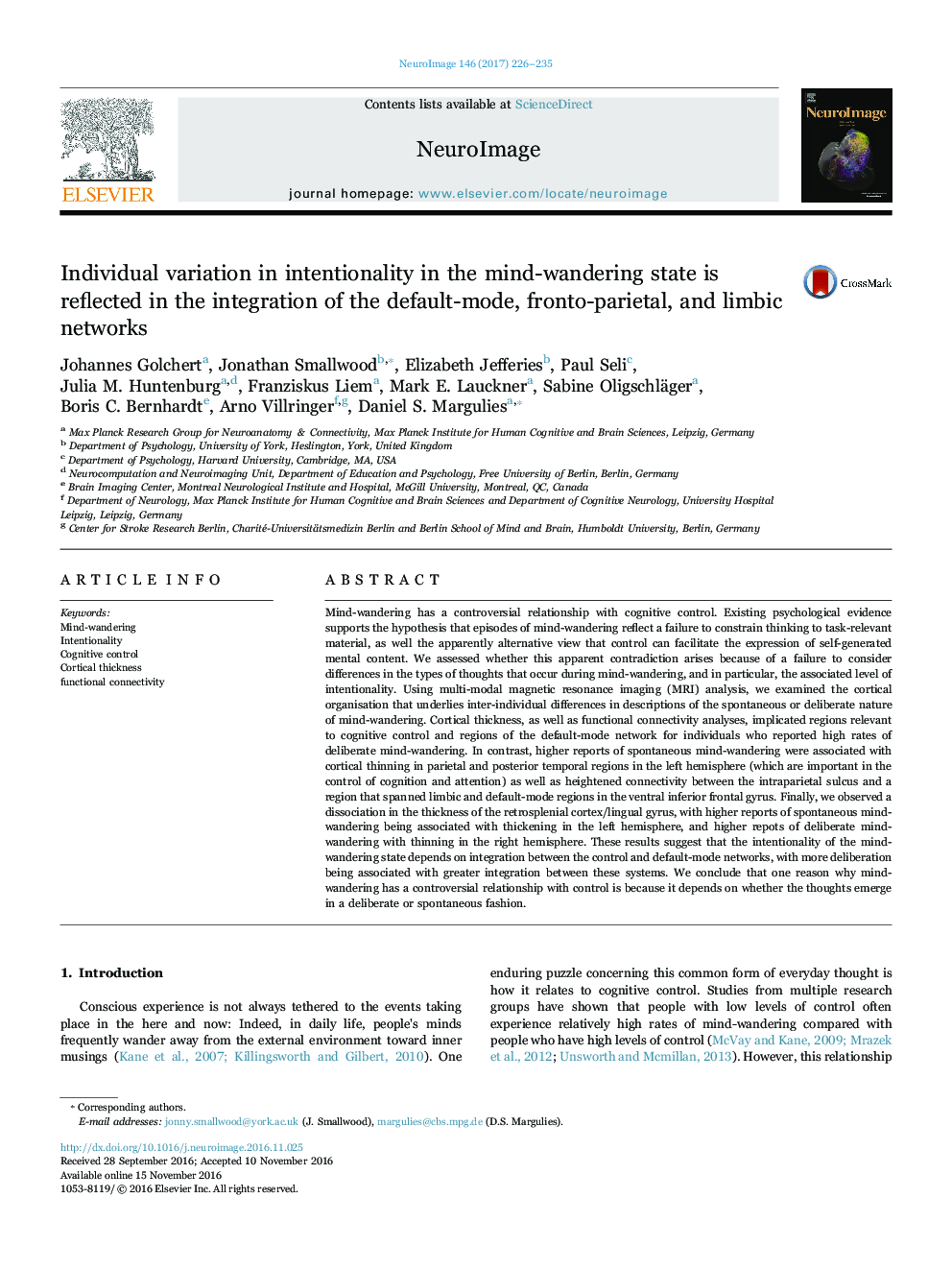| کد مقاله | کد نشریه | سال انتشار | مقاله انگلیسی | نسخه تمام متن |
|---|---|---|---|---|
| 5631333 | 1580864 | 2017 | 10 صفحه PDF | دانلود رایگان |
• Deliberate and spontaneous mind-wandering have unique structural and functional correlates.
• Reports of deliberate mind-wandering correlated with regions in both default-mode and fronto-parietal networks.
• Spontaneous mind-wandering was linked to less integrity in parietal and temporal regions.
• Intentionality during the mind-wandering state may depend upon integration between the default-mode and fronto-parietal networks.
• These neurocognitive differences explain why mind-wandering has a complex relationship with cognitive control.
Mind-wandering has a controversial relationship with cognitive control. Existing psychological evidence supports the hypothesis that episodes of mind-wandering reflect a failure to constrain thinking to task-relevant material, as well the apparently alternative view that control can facilitate the expression of self-generated mental content. We assessed whether this apparent contradiction arises because of a failure to consider differences in the types of thoughts that occur during mind-wandering, and in particular, the associated level of intentionality. Using multi-modal magnetic resonance imaging (MRI) analysis, we examined the cortical organisation that underlies inter-individual differences in descriptions of the spontaneous or deliberate nature of mind-wandering. Cortical thickness, as well as functional connectivity analyses, implicated regions relevant to cognitive control and regions of the default-mode network for individuals who reported high rates of deliberate mind-wandering. In contrast, higher reports of spontaneous mind-wandering were associated with cortical thinning in parietal and posterior temporal regions in the left hemisphere (which are important in the control of cognition and attention) as well as heightened connectivity between the intraparietal sulcus and a region that spanned limbic and default-mode regions in the ventral inferior frontal gyrus. Finally, we observed a dissociation in the thickness of the retrosplenial cortex/lingual gyrus, with higher reports of spontaneous mind-wandering being associated with thickening in the left hemisphere, and higher repots of deliberate mind-wandering with thinning in the right hemisphere. These results suggest that the intentionality of the mind-wandering state depends on integration between the control and default-mode networks, with more deliberation being associated with greater integration between these systems. We conclude that one reason why mind-wandering has a controversial relationship with control is because it depends on whether the thoughts emerge in a deliberate or spontaneous fashion.
Journal: NeuroImage - Volume 146, 1 February 2017, Pages 226–235
